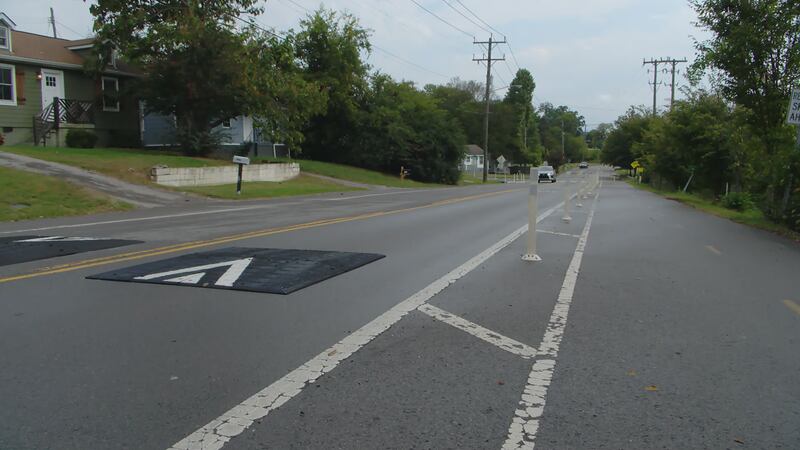Emergency responders share concerns about new speed cushions
Some say they make for a rough and delayed ride.

NASHVILLE, Tenn. (WSMV) - For 17 years Cory Gibson has had his hands on the wheel of an ambulance.
“You have to remember that they’re big,” Gibson said of the ambulance. “Your brakes are not infinite.”
Gibson is also a paramedic instructor at Volunteer State Community College and teaches his students that the goal is to safely get patients the help they need.
“A few seconds can save lives for sure,” said Gibson.
Related Coverage:
Gibson and other emergency responders feel that speed humps present a real challenge for first responders, especially when they’re trying to ventilate a patient or administer an intravenous line (IV).
“We don’t want to cause any more pain than the patient’s already in or any more distress,” Gibson explained.
They try to avoid that by having drivers call them out when they see the speed cushions, but unfortunately, that doesn’t always happen.
“They come up, sometimes, overnight and they don’t send us out any warning,” said Gibson. “It can be pretty much like riding the back of a log wagon you hit the back, and it will jar you pretty good.”
The Nashville Department of Transportation said the new speed humps in Nashville are smaller and spaced apart.
That way big vehicles like fire trucks and ambulances can drive right over them without having to reduce speeds, but Gibson said, they slow down anyway, which often leads to longer response times.
“There’s a lot of electronics in here. There’s oxygen tanks,” Gibson pointed out. “There’s a lot of equipment, and if I hit one really hard just trying to ignore it, I can jar the equipment around and possibly even damage that equipment, and that would not be good for anyone.”
Gibson joked that they do get plenty of practice during the wintertime with Nashville’s infamous potholes.
“Like after the snowstorm on Briley Parkway,” Gibson said.
And he said they’re in favor of anything that slows drivers down because, ultimately, the goal is to avoid having ambulances out on the roads in the first place.
“Let’s say one street over we have someone that’s gone into cardiac arrest and now they have to send another ambulance from another district to respond to that cardiac arrest because I’m dealing with a minor MVC (moving vehicle collision) that could have been prevented by a small speed hump,” said Gibson.
When asked what happens when speed humps get covered in snow, NDOT said crews are trained to work with the speed cushions and their routes are updated so they know where they are.
NDOT added that snow is plowed around the cushions and then the humps, themselves, get treated with salt.
Copyright 2024 WSMV. All rights reserved.












